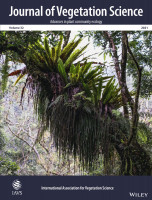Mean z-values were highest for lichens, intermediate for vascular plants and lowest for bryophytes. Bivariate regressions of z-values against environmental variables had rather low predictive power (mean R² = 0.07 for vascular plants, less for other taxa). For vascular plants, the strongest predictors of z-values were herb layer cover (negative), elevation (positive), rock and stone cover (positive) and the c-value (U-shaped). All tested metrics related to land use (fertilization, livestock grazing, mowing, burning, decrease in naturalness) led to a decrease in z-values. Other predictors had little or no impact on z-values. The patterns for bryophytes, lichens and all taxa combined were similar but weaker than those for vascular plants. >> We conclude that productivity has negative and heterogeneity positive effects on z-values, while the effect of disturbance varies depending on type and intensity. These patterns and the differences among taxonomic groups can be explained via the effects of these drivers on the mean occupancy of species, which is mathematically linked to beta diversity. Read more at Wiley

